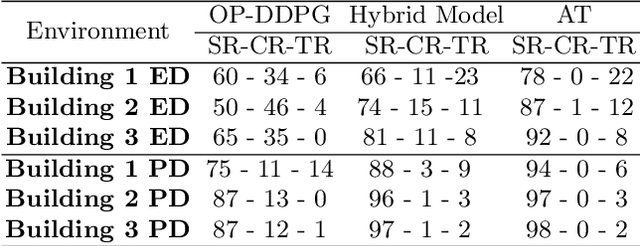Óscar Gil
Robot Navigation Anticipative Strategies in Deep Reinforcement Motion Planning
Oct 15, 2022



Abstract:The navigation of robots in dynamic urban environments, requires elaborated anticipative strategies for the robot to avoid collisions with dynamic objects, like bicycles or pedestrians, and to be human aware. We have developed and analyzed three anticipative strategies in motion planning taking into account the future motion of the mobile objects that can move up to 18 km/h. First, we have used our hybrid policy resulting from a Deep Deterministic Policy Gradient (DDPG) training and the Social Force Model (SFM), and we have tested it in simulation in four complex map scenarios with many pedestrians. Second, we have used these anticipative strategies in real-life experiments using the hybrid motion planning method and the ROS Navigation Stack with Dynamic Windows Approach (NS-DWA). The results in simulations and real-life experiments show very good results in open environments and also in mixed scenarios with narrow spaces.
 Add to Chrome
Add to Chrome Add to Firefox
Add to Firefox Add to Edge
Add to Edge